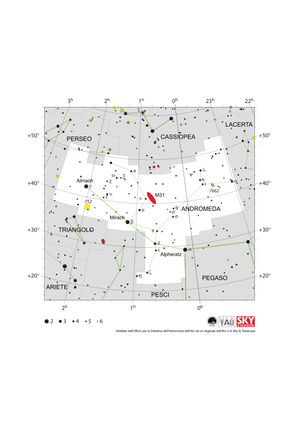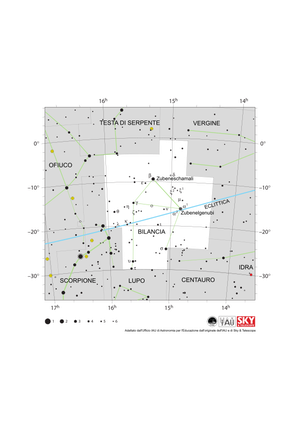Termine del Glossario Magnitudine apparente
Descrizione La magnitudine apparente è la misura della luminosità di un corpo celeste agli occhi di un osservatore. Per ragioni storiche, la scala della magnitudine assegna numeri più grandi agli oggetti più deboli. La magnitudine è una scala logaritmica, con una differenza di 5 magnitudini corrispondente a un fattore di 100 nella luminosità misurata. Esistono diverse scale di magnitudine perché la luminosità può essere misurata a diverse lunghezze d'onda e con diverse tecniche. La scala comune della "magnitudine visuale" è impostata in modo che la stella luminosa Vega abbia una magnitudine apparente pari a zero. In questa scala, Sirio, la stella più luminosa del cielo notturno, ha una magnitudine di -1,46, mentre le magnitudini del Sole e della Luna piena sono rispettivamente di -26,7 e -12,7. I numeri negativi segnalano che questi oggetti appaiono più luminosi di Vega. In condizioni molto buie, le persone con una vista perfetta possono vedere stelle fino a circa la magnitudine visuale 6. L'Hubble Ultra Deep Field raggiunge una magnitudine visuale vicina a 31. Si tratta di un valore pari a 100 alla potenza di 5, ovvero 10.000.000.000 di volte più debole della magnitudine 6.
Termini correlati
Vedi questo termine in altre lingue
status del termine e della definizione La definizione originale di questo termine in inglese é stata approvata da un ricercatore astronomo e da un docente La traduzione di questo termine e della sua definizione sono state approvate da un ricercatore astronomo e da un docente
Il Glossario Multilingue OAE é un progetto dell'Ufficio IAU per la didatticadell'astronomia (OAE) in collaborazione con l'ufficio IAU OAO per la DivulgazioneAstronomica (OAO). I termini e le definizioni sono stater scelte, scritte eriviste da un impegno collettivo da parte di OAE, i Centri e i Nodi OAE e iCoordinatori Nazionali per la Didattica dell'Astronomia e da altri volontari.Potete trovare una lista completa dei crediti, Tutti i termini del glossarioE le definizioni sono pubblicate su Creative Commons CC BY-4.0 licenza e dovrebbero essere accreditate ad IAU OAE.
Se noti un errore di fatto o di traduzione in questo termine del glossario, per favore contattaci.
Diagrami correlati
Mappa della costellazione di Andromeda
Crediti: Adattato dall'Ufficio IAU dell'astronomia per l'educazione dall'originale di IAU/Sky & Telescope
License: CC-BY-4.0 Creative Commons Attribuzione 4.0 Internazionale (CC BY 4.0) icone
Crux Constellation Map
Crediti: Adapted by the IAU Office of Astronomy for Education from the original by IAU/Sky & Telescope.
License: CC-BY-4.0 Creative Commons Attribuzione 4.0 Internazionale (CC BY 4.0) icone
Mappa della costellazione di Orione
Crediti: Adattato dall'Ufficio IAU di Astronomia per l'educazione dall'originale di IAU/Sky & Telescope
License: CC-BY-4.0 Creative Commons Attribuzione 4.0 Internazionale (CC BY 4.0) icone
Mappa della Costellazione della Bilancia
Crediti: Adattato dall'Ufficio IAU di Astronomia per l'Educazione dall'originale di IAU/Sky & Telescope
License: CC-BY-4.0 Creative Commons Attribuzione 4.0 Internazionale (CC BY 4.0) icone
Mappa della costellazione dello Scorpione
Crediti: Adattato dall'Ufficio IAU di Astronomia per l'educazione dall'originale di IAU/Sky & Telescope
License: CC-BY-4.0 Creative Commons Attribuzione 4.0 Internazionale (CC BY 4.0) icone













